THE RISKS OF GREENWASHING THE POTENTIAL OF LIFE SCIENCES THE FUTURE OF BROWNFIELDS



Economists – I admit I am one of them – have always been good at explaining the way things went in the past. Supported by increasingly complex mathematical models, they are making predictions about the future more than ever. And also for the construction and real estate sector. You smile when you see what has become of many of those forecasts… House prices would fall in Belgium for the first time in forty years due to corona. Shopping centers would be threatened by the cocktail of lockdowns and the advance of e-commerce. Just the opposite turned out to be true. The inconvenient truth is that the future cannot be accurately predicted. A pandemic that put the whole world in lockdown. A cruel, destructive war in Europe. Gas prices that have increased tenfold. Inflation of more than 10 percent. Climate disasters never seen before, from Wallonia to Africa. E-commerce giants like Amazon and Alibaba and social media giants like Twitter and Facebook looking for new wind. Who would have dared to predict this at New Year 2020?
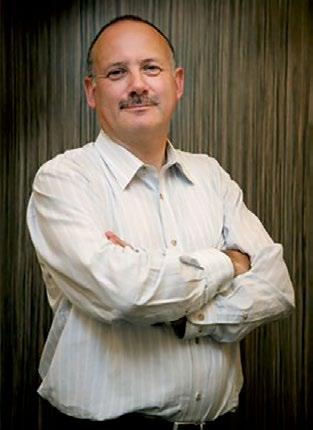
Nothing is final. We are all addicted to linear thinking. Because it’s so temptingly easy. There are few trends that don’t end with a break. Change is the basic rule, not the exception.
American singer-songwriter Bob Dylan, Nobel Prize 2016, wrote his ‘The Times They Are a-Changin’ sixty years ago. He penned it down in an effort to create a song that would reflect the change of the moment. The song became an evergreen. Because that text was so beautiful and so to-the-point, and it was delivered with a virtuoso performance, but also because it is a theme of all times.
Prediction is very difficult. Much better and much more important is to prepare for change. In fact, a company has the best chance of making its living tomorrow by capitalizing on that change and seizing the opportunity to do so many great new things. Darwin was not an economist, but his theory of evolution can safely extend to the business world: to survive, as a business leader you must adapt and be engaged in what is happening and changing around us. As a leading real estate agency and advisor in Flanders and one of the major players in Belgium, Ceusters is pursuing this path of everlasting change. In this issue you will find some stepstones and testimonials from customers, partners and Ceusters employees. Focusing on sustainability, even when it comes to just land, the beginning of all real estate. Responding to fast-growing sub-markets such as life sciences/health care. The importance of improving retail marketing in large and small shopping centers. Are you part of this too?
Patrick Luysterman
Editorial 1 Content 3
Soil reconversion: ABO Group 4
Soil reconversion: MG Real Estate 8
Soil reconversion: Intervest 12
HR: Facts & Figures 16
Life Sciences: The rise of a new asset class 18
Property Management: Greenhill Campus 24
Agency & Consultancy: CEUSTERS Deals 26
UN Global Compact: Positive Impact 28
Retail Marketing 32
Retail Marketing: Marketing Awards 2022 34
HR: Tour & Taxis 36
Property Management: CEUSTERS Portfolio 38
It may sound obvious, but the very first act in any construction project is to dig a hole in the ground. The perspective of ABO-Group, experts in everything that concerns the soil and whose slogan is ‘Laying the foundations for a healthy future’, is therefore relevant. ABO’s activities can be summarized as a focus on what is happening beneath the surface and includes, analyzing the soil regarding pollution, measuring stability and monitoring the different steps throughout the remediation process.
During an interview, CEO Frank De Palmenaer covered a number of topics which have a bearing on both the wider international context and the situation more specific to Belgium.
Frank De Palmenaer started by citing that now, more than ever, research and studies concerning ground works and the stability of our soil are indispensable. Climate change and global warming are having an impact on our soil and environment, which in turn has an impact on our infrastructure and buildings. He stated that care will have to be taken in reconstruction works in Wallonia following this year’s floods. We will have to find ways to cope with our changing environment. And along with all this, the foundations of buildings are being affected by the current lack of rain and increasing drought.
For a company like ABO the effect of chemical elements lay within the expertise of its multidisciplinary experts. For example, one of these new contaminants is known as PFAS (per- and polyfluoroalkyl substances).
Renewable energy is another pressing matter and also requires attention concerning infrastructural solutions.
ABO is already active on certain levels when it comes to generating green energy. For example geothermal energy. In Wallonia we are considering the possibility of using old mineshafts to generate energy using the heat of our planet. In order for this to be feasible, difficult deep drilling methods have to be used.
PFAS is a collective term for a group of more than 6000 non-degradable chemicals. For decades they have been used in different products because of their useful characteristics: water-, grease- and dirt-resistant, heat-resistant and fire-resistant. As of today, there are still no ways to treat soil that has been contaminated with PFAS. The work that needs to be done on the polluted 3M-site in Antwerp for example, is uncharted territory. ABO is closely involved with all the key stakeholders to ensure feasible solutions within this matter. Another problem is chromium-6, one of those proven very serious cancer-causing substances that you find, among other things, in black tar at the bottom of ships and wagons or on the bottom of electrical pylons. ‘The new asbestos’, some believe. PFAS and Chromium-6 are just a few examples. We have not seen the end of possible other endangering chemicals.

“Climate change has a big impact on our soil and therefore also on our infrastructure and buildings”

Moving on to the existing situation regarding construction and demolition in Belgium, Frank De Palmenaer pointed out that the construction market is not only governed by natural or chemical factors (climate change, pollution...), but also by political factors and laws.
Developers and contractors have to take into account different kinds of regulations, in which ABO can guide them and be of assistance throughout the different steps of the project.
For example regulations concerning the demolition of existing buildings. It is for instance obligatory to draw up a demolition follow-up plan (including a destructive asbestos inventory) by a recognized expert when it comes to bigger development projects.
Moreso, as of the 30th of June, it’s mandatory to go through a traceability procedure with a demolition management organization.
Another example in terms of legislation is the requirement for buildings to be asbestos-free and certified as such. Flanders aims to be asbestos-free by 2040. In line with this goal, new legislation has been introduced. As of the 23rd of November, homeowners will have to submit an asbestos inventory certificate when selling their house built in 2000 or before. The new obligation applies to any sales contract signed from 23rd of November and must be communicated to the buyer during the signing process. When it comes to the removal of asbestos, there’s no obligation yet.

Currently, there is only an obligation for public buildings to remove certain asbestos materials by 2034 or 2040, respectively, to achieve an asbestos-safe condition by 2040.
However, anyone managing asbestos is obliged to ensure that it does not pose a risk to people or the environment.
And lastly, the opinion of the local population has to be taken into account, who tend not to be in favour of larger new constructions, even when they may be desirable or necessary (nimbyism). Sometimes certain structures may be dangerous because of their age or their usage (for example nuclear plants). People would prefer to see them built far away from their homes, such as on sites somewhere out at sea. This, in turn, raises new political questions concerning for example the width of our Belgian coast and national waters, which are restricted by law. And furthermore, our politicians do not always agree on every level.
One of the words that entered our language over recent years is ‘greenwashing’. Greenwashing affects the real estate industry, according to Frank De Palmenaer in particular because of the unclear legislation regarding eco-building. We are obliged to have certain certificates and attestations but we are not yet totally ready for everything which is asked of us in terms of energy etc. in the industry, and we even appear to be going backwards.
Previously, says Frank De Palmenaer, the procedure was to appoint an architect to design the project and take it from there. Now, we think more in terms of an overall project team to be in place from the very beginning. It is necessary to have specialists for each aspect of the construction as well as the legal issues, along with the risks. It is also preferable to think on a wider scale than just a single building, and to take the whole of the district into account. By doing this we can also play our part in the construction of sustainable cities, working in coordination with the local authorities.
It is the policy of the Flemish government to chart asbestos present in buildings. From November 23, 2022 an asbestos test will therefore be mandatory for the sale of buildings constructed before 2001. By 2032, every building owner of such a building dating from before 2001 must have an asbestos test. By detecting and removing asbestos, the Flemish government aims to make Flanders asbestos-safe by 2040 at the latest. The use of materials containing asbestos has been prohibited in buildings constructed after 2000.
The desire to build within the concepts of the circular economy is laudable but also adds a layer of difficulty. Frank De Palmenaer states that he is now considering the possibility of executing a circular project in Melle. There, an old building will be demolished and these materials will then again be used in a new project in Andenne, where offices and a car park will be constructed. Certainly not everything can be used again, but the goal is to reuse as much as possible. Although many elements will be reused in the new office building, we will still have to take into account the environmental impact of transporting all these materials.
A fascinating insight into an aspect of the construction of any new project –from a power station to an apartment building – which the professionals have to deal with as an absolute priority. The population at large, by contrast, generally only sees the part which emerges from the ground afterwards!
An asbestos test is the result of an asbestos inventory of a building. Based on this inventory, OVAM (the Flemish agency mandated with managing the waste domain) delivers a unique asbestos test certificate for each building. This certificate contains information about asbestos in the building and tests whether it is asbestos-safe. It describes for normal use of the building which materials or building components contain asbestos, what the condition of the asbestos is and gives advice on how it can be safely managed or removed.
Frank De Palmenaer CEO of ABO-Group
“The regulations regarding eco-
happening”UPTOWN - VILVOORDE

MG Real Estate is a developer based in the Ghent area and has a focus on logistics properties, which account for around 75% of their business. They are therefore particularly involved with the topic of soil remediation.
MG Real Estate CEO Ignace Tytgat introduces his company by pointing out that it was founded at the beginning of this century. One of the first projects was an office building for public transport operator De Lijn in Mechelen, on heavily polluted land and it involved the demolition know-how of the former ‘De Paepe Group’ in its early days. This development, along with others, persuaded the company to move into the development field as a mainstream business. There are now around 70 people in the company, and it is active in the Nordics, Luxembourg, the Netherlands, France and Italy as well as Belgium.
Over the past two years the company has evolved from development alone into investment as well. This means that MGRE takes care of the property and asset management of the buildings it places within its investment fund.
MGRE believes that by being an investor they are a better developer because they are closer to the end user client and his needs. They are also able to offer small clients the advantages of high volume pricing by making their asset part of a larger portfolio.
Where brokerage is concerned, CEUSTERS has been a supplier for many years and is particularly active for large deals in Belgium, such as the ‘Éclair’ bakery site for Carrefour.
On the topic of the company’s sustainability strategy, Ignace Tytgat finds the terms a little outdated. MG refers to its strategy as ESG and also focuses on being carbon-neutral. The company produces an annual report despite not being listed on the stock exchange. Why? Because in each country within which it operates, sustainability reporting is necessary in order to obtain financing. Nowadays, Ignace Tytgat emphasizes, being sustainable is no longer a choice but an obligation in order to do business. You don’t need to specify ‘green financing’ any more because the only financing available is green. The first genuine ESG company report is currently being prepared for publication next year. This will include medium and long term goals.
On the subject of the danger of ‘greenwashing’, Ignace Tytgat simply explains that the buildings that they construct are genuinely green and certified, and that the question thus answers itself. All of the technical features required by contemporary environmental legislation are integrated into the developments. Clients receive the building along with the BREEAM certificate and with a ‘green’ clause in the contract which specifies all of this.
One of the largest projects in MGRE’s portfolio is ‘Uptown’ in Vilvoorde. This is part of the infamous Renault site, and involves redevelopment into a city district including logistics, offices and residential. A new hospital will be constructed and all of this, once defined by the final masterplan, will create activity and employment. A number of stakeholders are involved in drawing up this masterplan and therefore it is too early to set out exactly what environmentally-friendly features will be included.
MGRE has been developing brownfield sites for over twenty years, well before brownfield reconversion became popular. The company has a great deal of experience, therefore, in dealing with polluted land. The Carrefour logistics property in Ternat was built on a former Sun Chemical, an ink production site, for example, and clearly needed to be remediated before the new construction could be put in place. The land was bought in its existing condition, a typical policy which means that the previous owner does not need to be concerned by the decontamination process. This aspect is entirely taken care of by MGRE. The risk factors (pollution, demolition, permits) are all transferred to MGRE along with the land.
The Carrefour bakery ‘Éclair’, on the other hand, presented two different challenges. One was the demolition/de-pollution issue, which is normal for MGRE, and the other is the proximity of housing to the site. The local inhabitants were therefore involved in defining how a green industrial project could harmoniously take its place alongside a residential district. Communication and participation were the keywords, with several meetings arranged with the residents. One of the features was to align buildings alongside the E40 so that existing noise for the residents is reduced. Noise created by the logistics activity is also reduced by, for example, totally covering the truck docking area. Noise is this way ‘contained within’ wherever possible.
No land is too polluted for MGRE. While decontamination legislation is getting ever stricter, MGRE is investing in internal expertise and training to keep up. Recently, the company bought a former landfill site, and was able to fix the pollution before construction. And indeed, pollution has by law either to be removed from the site or fixed safely in place.
More than 75% of the land in MGRE’s portfolio has been polluted, and it is difficult, Ignace Tytgat explains, to find land which has not been contaminated in some way.
“Being sustainable is no longer a choice but an obligation”
“It’s hard to find land which has not been contaminated in some way”
While the ‘E’ for environment may be quite clear within ESG (BREEAM…), the ‘S’ for social needs a little more explanation. The company addresses this in a number of ways, including by communicating with local residents. Any new project starts with a discussion of this kind, it is not something which is added in later. MGRE can then go to the local authorities knowing what the desires and constraints of the local inhabitants are and, in addition, what employment will be created.
Despite being so heavily focused on logistics, the most visible ‘MGRE product’ is alongside the E40 motorway in Ghent. Everyone driving along theBrussels-Ostend route is struck by the huge tower which was originally known as the MG Tower, then the KBC Tower, and now the Artevelde Tower.
Ignace Tytgat explains that MG has always been active in several asset classes, but explains that where offices are concerned, the market is very geographically sensitive and a detailed knowledge of the city in question is vital.
Having always been in and around Ghent, MGRE has this expertise and was able to acquire the land and convince KBC to take it, even without a prior building permit in hand. However, the company’s expansion plans are focused on logistics, for which the geographical location of the product is more obvious to determine.

 Ignace Tytgat CEO of MG Real Estate
Ignace Tytgat CEO of MG Real Estate

Intervest is a highly active company within the real estate field, with a particular interest in logistics.
Gunther Gielen, CEO of Intervest, explains how his company has developed over recent times and what are the backbones of its philosophy. Intervest is a stock exchange listed company which is mainly active in the offices and logistics segments. The company has grown very strongly over the past couple of years, particularly in logistics. This has included a new activity for the company, namely undertaking their own developments rather than buying rented buildings. So shifting the company from merely buying cash flow to generating cash-flow itself. In Belgium Intervest currently has the largest logistics development, the former Ford car production site at Genk. This site has the advantages of being close to the German border and of having a canal running alongside for waterway transport.
The portfolio of Intervest now extends to around 1.1 billion square metres representing a fair value of around € 1.3 billion. The ongoing development pipeline is around 405,000 square metres with a real estate value of € 485 million. The portfolio is split as 73% logistics and 27% offices. All figures as at 30 June 2022.
The relationship with CEUSTERS is twofold. Firstly, CEUSTERS acts as a broker for introducing new tenants, and above all the two companies are described by Gunther Gielen as being ‘good neighbours’. The two company headquarters are side by side on Uitbreidingstraat on the southern edge of Antwerp city centre, and this leads to the possibility of ‘intelligent and sophisticated discussions’ with Ingrid CEUSTERS and her team. The two companies invite each other to events they organize.
Intervest’s ESG strategy is based on four main pillars: value creation, client orientation, sustainability and team Intervest. Sustainability in itself is already very important to Intervest and forms part of its ADN. The company has a wide interpretation of the concept of sustainability, which involves every aspect of ESG. In concrete terms, Intervest complies with all seventeen sustainable development goals of the United Nations. They especially focus on future-proof buildings, striving to create high standard buildings with a great deal of focus on energy efficiency and the health, wellbeing and safety of occupants. This therefore takes in the social aspect of ESG. In terms of governance, it is important to note that business integrity and compliance are very much the company’s creed.
Looking more closely at future-proof buildings and energy efficiency, Intervest sets itself very demanding targets. By the end of this year, Intervest is aiming for 100% sustainable electricity, 80% of the logistics assets being fitted with solar panels and 80% of the portfolio being equipped with intelligent energy metering. On top of this, at least 30% of the buildings are scheduled to have a minimum of ‘BREEAM Very Good’ certification.
Returning to why sustainability as a strategic pillar has such a high impact, Gunther Gielen states that this is as important in itself as the entire ESG concept. This is because most of all they see ESG as creating long term relationships with all of Intervest’s stakeholders. The company believes it is very important, for example during the development of a logistics building, to pay a great deal of attention to the comfort of the end user. They try to make sure, for example, that there is a high degree of daylight even in a logistics building, and they say they were the first company to do this. Daylight contributes to the wellbeing of the employee in the building, of course, but it also adds to the sustainability of the building (and presumably its value) over the long term. It is not only energy (solar panels, high efficiency heat pumps for heating and cooling) which is involved, but also the overall benefit of the building to its users, therefore.
Sustainability means pursuing the highest standards on both the investment and the financing sides of the activities. And if Gunther Gielen speaks a great deal about logistics properties, this is because Intervest believes there are already enough offices in the world, without building more. And, he says, the most sustainable building you can have is the one you don’t build. A tough message, he concedes, but the truth. Politicians, he goes on, always sing the praises of their energy-efficient ‘class-leading’ new buildings, but they forget to mention that these buildings are made with materials and materials have a lot of embedded carbon within them.
An existing building such as Greenhouse Collection, a former Mercator Insurance building in Antwerp they are currently working on, is sometimes thought of as having many issues. However, this is not true because these buildings dating from the last quarter of the 20th century were generally constructed with high budgets. They had very strong concrete, and this concrete, re-used as part of the structure of the redeveloped building, is already very efficient in terms of insulation. So it doesn’t require a huge amount of investment to integrate new technologies into an older building and bring it up to a high standard with high energy efficiency and without too negative an impact on the financial side. Gunther Gielen believes that Greenhouse Collection with its plethora of technologies, is the smartest building in Antwerp.

“The most sustainable building you can have is the one you don’t build.”GREENHOUSE COLLECTION - ANTWERP
Sustainability in terms of office development, therefore, means not constructing a new building when it is not necessary. The situation is slightly different for logistics, where there is a growing need for storage space and where the requirements of operators are considerably different from the past. The growing need is partly due to the boom in e-commerce, but also to the fact that there is now a trend for de-globalization, which means storing goods closer to where they will be used. To put this starkly, he says, it is also ridiculous that when a ship gets stuck in the Suez Canal or the Chinese install a zero-covid policy in their ports, the whole world economy grinds to a halt!


Soil contamination is an issue which Intervest has to deal with. The Genk project is a case in point because it was a car production plant. The main message, Gunther Gielen says, is that Intervest does not shy away from this type of challenge. They are used to working with brownfields which are both part of our historical legacy and which add to the overall concept of sustainability. The advantages of brownfields are often to be found in their favourable location and in the opportunity they provide for being revitalized. When the ground is a little unstable, such as is the case in a large project in Puurs, much of the project will be supported by pillars. Intervest has the experience of doing this because it is common practice in the Netherlands where the company is also active. The technical engineers within the company, he explains, love this type of challenge. This means that both the end user and the company’s engineers are winners in this situation.
 Gunther Gielen CEO of Intervest
Gunther Gielen CEO of Intervest


The rise of interest by real estate developers and investors in the life-sciences segment has led to it potentially now constituting an asset class in its own right, in the same way as offices, logistics… To find out just what this segment means to the market, we conducted a ‘cross interview’ with Michel Leemhuis, CEO of Netherlands-based developer Kadans (assisted by Senior Asset Manager Sandrine de Wouters) and Matt Lee, Head of Science & Technology at UK-based property agent and advisor Carter Jonas, a partner of CEUSTERS in the international and independent network IRELS.
Can a segment as ‘niche’ as life-sciences really give rise to an asset class in the same way that offices and residential are asset classes?
Michel Leemhuis: Yes, to my mind it certainly is an asset class in its own right. If we look at the profile of our tenants we see a very specific group of users of the space. These organizations have a real need for a specific type of property such as clean rooms, laboratory space and other types of research facility. It is a very different segment from other types of offices. But we had to convince banks and others of this in the early days. I also think it is a segment which is set to grow.
“It’s a niche segment, but that doesn’t mean the market is small”
M. Lee
Matt Lee: From past experience at Manchester Science Park, buildings designed as research facilities within the site achieved rents which outperformed those of a standard equivalent office space significantly. And while the term ‘niche’ means ‘appealing to a small specialized population’, the amount of overall recognition within the market, including government support, means that while this segment is specialized, it is no longer small. There is a prolonged period of high demand set against shortage of supply, hence it is becoming a large market. There is a massive increase in developers – particularly international – looking for life-sciences opportunities. And they are not always interested in other segments. I also agree with Michel that this is a segment which is here to stay.
Michel Leemhuis: The gap between supply and demand, I would add, is not only in the UK but is being seen right across continental Europe, and we expect this to grow further as demographic changes take root (ageing population for example). This lack of demand in Europe will grow because I would say that the continental market is around five years behind the UK in time-scale.
Does this type of property require specialist architectural competences and other specialized knowledge?
Michel Leemhuis: We only develop for our own portfolio, and we do know what the properties require. You have to speak the language of the sciences and you need to have profound knowledge of the different lab types and other requirements. There are such issues as the internal height requirement of the buildings to be taken into account. We develop multi-tenant properties, which brings another set of requirements, and we always stimulate our tenants to meet with each other to create cooperation and innovation, with meeting areas designed in from the outset. We believe this is a success factor for these campus environments. You can’t operate in this segment without having any knowledge of the specific requirements. And it is the whole team (architects, client, developer…) which needs to have this specialized knowledge.



“The continental market is around five years behind the UK”
M. LeemhuisMichel Leemhuis CEO of Kadans Sandrine de Wouters Senior Asset Manager at Kadans Matt Lee Head of Science & Technology at Carter Jonas
Matt Lee: In my own experience (including working for a science and technology developer) it is also important to future-proof the buildings, making them flexible enough to cope with evolving market trends. This is quite a challenge when you are talking of very specific needs within the building. You also need to have an understanding about who you are tailoring a particular facility towards, and ensure you meet their requirements.
Is the segment already in place in Belgium, and if so, where? If not, do you see any probable future locations? How large could the segment be?


Power is another major consideration, especially if you are redeveloping a facility from another use such as offices. A significant increase in power is required. If you haven’t taken advice about this at the beginning of a development, it can lead to substantial time delays. Floor loading, air handling, vibration responses, delivery access, all of these and more need to be considered, not to mention storing gases and chemicals, drainage requirements... All this may put a traditional developer off but is part of the scenery for life-sciences developers!
Sandrine de Wouters: In Belgium the segment is already there, but with huge demand which is very exacting about its location. It wishes to locate within the right eco-system. The supply side, the investment side, is lagging a long way behind this demand in Belgium. And it is a fragmented and as yet immature supply side, which is why in our company we have to work quickly to respond to our clients’ demands. People call all the time asking about locations with universities, science parks… And Belgium is very strong in the pharmaceutical sector, with companies such as GSK, Janssen Pharmaceuticals, UCB which doubtless adds to the attraction for life-sciences. There are also highly ranked universities. There are clusters close to the well-known universities, and there is also the fact that the percentage of GDP spent within this field is also relatively high compared to the rest of Europe. Tax advantages, along with support for R&D, in Belgium are also advantageous.
“It’s an important, but difficult task to future-proof buildings in this field.”
M. LeeACCELATOR - UTRECHT
Universities and clusters have been mentioned. How important is it to be near to expertise of this type?
Matt Lee: Proximity to universities creates opportunities for collaboration, and access to talent. These communities give rise to the development of clusters, and clusters attract companies, which creates further demand. Here in the UK, traditional university cities such as Oxford, Cambridge, London and Manchester have very strong clusters, built on the foundations of cooperation with the universities, NHS trusts and start-ups. When talking to potential international companies from outside the UK, it is very clear that the opportunity to collaborate with universities and with organizations such as the NHS, is an important factor. Access to the right talent is also critical – without this talent companies can’t grow. Universities provide a pipeline of available talent. What is also happening now is that the life-sciences companies are working with universities to deliver full or part modules to students. But it is also true that clusters can develop around large companies, as Sandrine mentioned.
British universities have been mentioned. Which are the universities in Belgium which fulfill the same role?
Michel Leemhuis: Among others, the universities in Leuven, Louvain-la-Neuve and Ghent are well known for their quality research. So there are campuses which will lead to the development of clusters where companies can grow. I think the European situation is the same as the one Matt has described in the UK – the importance of proximity to a ‘knowledge institute’ (university, hospital…). We recently conducted a survey in the Netherlands which showed that 85% of our tenants collaborated with other companies on the site. Mutual research and knowledge-sharing takes place. And these tenants will always stay on site in such circumstances.
CEUSTERS has recently been involved in a transaction which saw Netherlands-based Kadans purchase an office building on the Leuven (Arenberg) Science Park. Kadans is a company which focuses on investing (developing, investing, building, financing and buying), leasing and managing commercial and office buildings throughout Europe.
From laboratories and clean rooms to research facilities and climate-controlled spaces, it goes on to say, it designs and builds inspiring buildings inhabited by inspiring people.
CEUSTERS’ Head of Office Agency Ronny Nuten, who is also a Member of the consultancy & investment team, told us in just a few words what the transaction involved.
First of all, tell us what was transacted.
Kadans bought an office building with labs (mechatronics) of some 7,000 m² from developer Van Roey situated on the Arenberg Science Park of the University of Leuven. The tenants of the INTARSIA building are KUL Leuven, Serris, Flanders Make and Twin Mobile and the selling price was around 11 million Euros.
What was the role of CEUSTERS in this?
We were mandated as the exclusive selling agent for landlord Van Roey. This is a domain in which I personally have some experience because earlier in my career I have worked with several life-sciences companies on Ghent Science Park in cooperation with the University of Ghent.
What triggered Kadans to make an acquisition here?
Matt Lee: In the UK it is less likely that this could happen around NHS hospitals, although something similar could take place with private hospitals. We have, however, seen the development of a life-science innovation campus located on a Manchester hospital site, which is probably the nearest comparison. And this also provides services to patients and commercial space for companies collaborating with the trust.
Sandrine de Wouters: I believe that the future development of life-sciences will take place on existing science parks. There is still room to build on existing science parks and this will happen before new locations are created. There is one new science park which is being developed around a new large hospital, in Liège, but it is not really retail, but research facilities, as Matt has described.
This was in some ways an opportunity to make an entrance onto the park, as it is expected that the University of Leuven will expand much more in this domain in the years to come, building a lot more life-sciences space.
In 2021 Kadans already bought the Watson & Crick Hill and Research & Technology Park (28,000 m²) part of Louvain-la-Neuve Science Park. The limited distance between Leuven and Louvain-la-Neuve was also an advantage for Kadans.
It should be noted that the Arenberg science park covers 13 hectares, and will eventually contain four building clusters of 25,000 m². The existing two building clusters already host several KU Leuven spin-offs, specialised in ICT and biotechnology. The science park provides office space, lab. space and support services for the core activities of young high-tech companies.
What are the prospects for health malls, retail malls attached to a hospital?
Michel Leemhuis, Can you tell us about funding for the life-sciences sector in these difficult times and about the need for specialist agencies in this field?
Michel Leemhuis: We talk about funding a great deal with our shareholder AXA. There is still a great deal of interest in this sector when compared to other asset classes such as offices or retail. So we expect this to remain – it was even resilient during the pandemic. But banks are of course a bit more hesitant at the moment, which could be worrying because these are high cost facilities.
When it comes to specialist agencies, it is key to be dealing with the right team, and this could be an inhouse team or an external team, with high knowledge of this. You are not merely offering space but creating an environment.
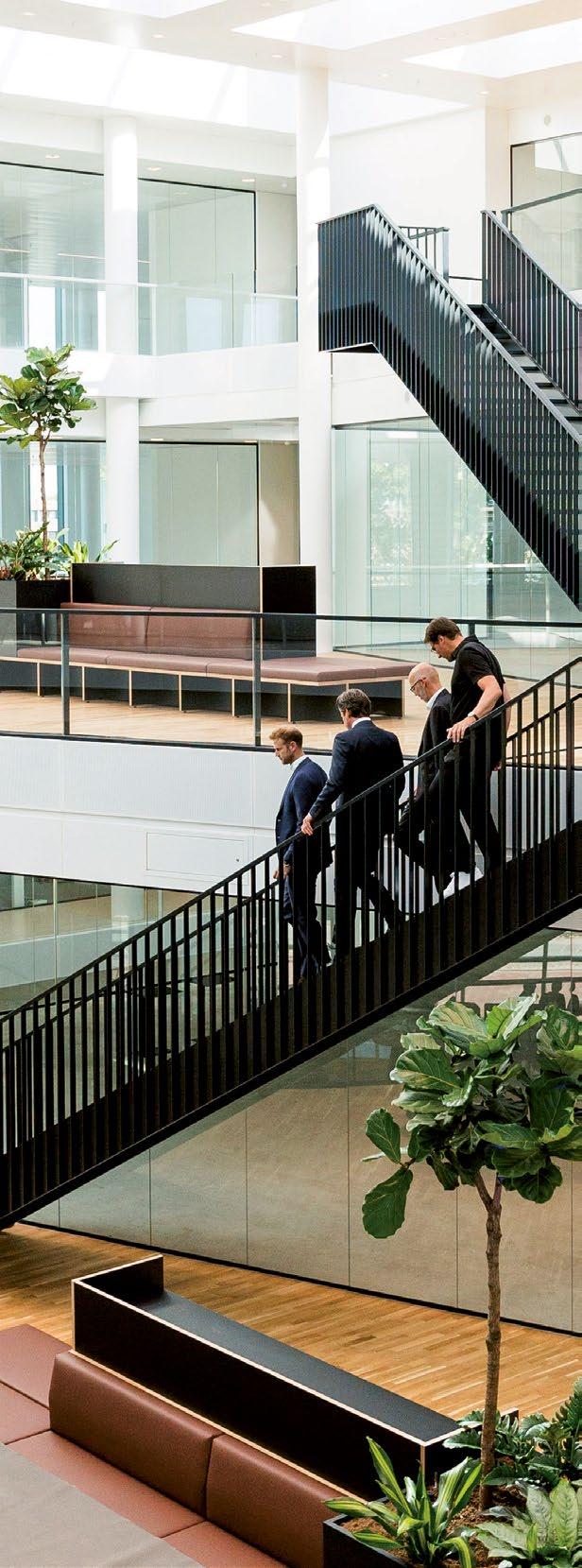
And Matt Lee, How do you see the attractiveness of the UK market in light of the current volatile political situation, and what about the impact of high energy prices?
Matt Lee: These are the questions on everybody’s mind. There is a lot of interest in the sector, and investment is still coming. Occupiers may face more challenges in raising investment at the moment, however this year started strongly and the investment levels over the last couple of years show that companies have resilience. Where energy is concerned, this sector is high energy use, especially in electricity. So the impact is proportionally higher in life-sciences. But no-one knows how long this macro-economic situation will last. It cannot be denied that if a lot of your available funds are being spent on energy, you cannot grow as quickly. But the life science sector in general is very resilient and has taken on a lot of investment. Also, the NHS is increasingly interested in working with private companies for collaboration on research and to look at emerging technologies which in turn creates demand.
“You are not merely offering space but creating an environment”
M. Leemhuis
It is not unusual for emerging segments in any type of industry to give rise to spin-offs which then become a niche segment in their own right. Within the overall real estate industry, life-sciences represents a segment which is now becoming well-established, and it is not surprising that it has also created something of a spin-off, in the form of health malls – shopping arcades attached to or even inside hospital premises. This new activity is also closely linked to one of the major segments in real estate – retailing and in particular shopping centres.
Nathalie Verheyen, Teamleader Retail Agency at CEUSTERS explains what is involved in this activity.
One of the domains in which CEUSTERS has become something of a specialist is in the letting of health malls. These are generally located in or close to hospitals and cater for the needs of the hospital community.
CEUSTERS has been involved in several health mall transactions; is this a strategy or just part of the overall activity?
It probably arises from the fact that we have many mandates for shopping centres and this experience is useful. A health mall is a type of shopping centre with the same concept – several shops in one place.
The operators need advice within the domain of where it is best to locate the entrances, which shops will be best placed in which location. So it didn’t start out as a strategy but the health mall operators can see that with our experience we can bring them substantial added value.
What
transactions?
We do the brokerage, renting vacant units. And when it comes to health malls we start from scratch, sometimes with spaces of 2,000 – 7,000 m² available for commercial leasing. So then we start looking for candidates to place in these units. That’s one of our jobs and another is to support and advise the landlord –from plan – as to where the communal areas should be located, or where deliveries could take place, how garbage can be disposed of, what technical details need to be considered… This is the main difference between letting a shop unit which has become vacant in a normal shopping centre, and where everything is already in place, and a health mall where we start from a blank canvas. We are involved from the very beginning as we also have been when building shopping centers and other retail locations.
Do you need specialist knowledge to act in this domain?
Yes, but not in the health domain itself – this is the job of the hospital alongside which the health mall is located. In these projects we use the knowledge from our technical, project, administrative and other experts. We treat it as a shopping destination which happens to be inside a hospital, but it is a shopping destination nevertheless. When it comes to the type of tenants to find, we do of course listen to the hospital, because they know what type of footfall they have, patients, visiting families of patients and so on. They may have very specific needs, such as hairdressers who can also give advice on wearing wigs for example. They may also need tenants who offer official brands or other special products. Every one of these projects is also really specific since the sites are located differently, from a pure stand alone site to a health mall located within a city center. Both locations offer different opportunities in which we like to assist the hospital.
We are not yet at the stage of leasing, we are still at the stage of project management, holding regular meetings with the owners and project group. We have a large commercial area which will be ready to be leased, so we are discussing what is needed, how the logistical needs of several tenants can best be organized… We are looking at all these needs and then we give the information to the architect so that he can take all this into account when designing the layout of the commercial space. There is a long way to go, the mall is not scheduled to open until 2027…
This is a hospital in Antwerp set to open in December 2023 and here we are at the leasing stage, looking for tenants. We have so far leased around 60% of the space.
Are you seeing an increase in activity in health mall activity in Belgium?
Yes, for sure, because it is becoming common for small local health malls to consolidate into larger complexes. So in becoming larger they will see more footfall, require more staff etc. When this happens they need to add different types of retailers to their offering, including for example chocolates or a small supermarket as a service for the employees… This also changes their business model because this increased activity adds to their revenues.
Are the retailers mostly Belgian, or international?
The mix tends to be around 50/50, with large retailers such as supermarket chains (also necessary in a hospital health mall environment) who are operating internationally, and small independent retailers such as the hairdressers I mentioned, which are obviously local and Belgian.
Growners, a company which has been operating in the commercial property sector since 2003, specialises in the purchase of office buildings, and industrial and logistics spaces which are then partitioned into units for sale or rent. One of its major projects is ‘Greenhill Campus’ , a business park of around 20,000 m² with landscaped gardens, located on the Haasrode Research Zoning in Leuven close to the E40 motorway. Steven Sagman, COO of Growners, tells us about this strategic complex and its history, along with the working philosophy of his company.

First of all, how did Greenhill Campus come into the ownership of Growners?
In 1998 the existing industrial building were demolished to make place for the construction of a research park with offices, laboratories, car parking and green areas. The Greenhill Campus now consists of nine buildings with above and underground parking spaces and also polyvalent underground archives. Growners purchased this property in the middle of 2022 and since then has been working hand in hand with regional organization Interleuven, which is charged with ensuring among others that scientific and technological activities are respected. So we are now carrying out this mission to preserve the spirit of the research campus.
Is this a one-off or a strategic move for Growners to become more active this market?
First of all, since 2003 we have been specialising in the purchase of office, industrial and logistics space. Following a first purchase of an office building twenty years ago and after a market analysis, Growners noticed there was a demand from SME’s (accounting/lawyers firms, consultancy/research companies,..) to buy their own office space in a professional building but also noticed that there was no existing offer on the professional rental market. It’s not the first time we have purchased a building in a Science park. In the past, we have already successfully applied our model to the BAROC in the Ottignies-Louvain-la-Neuve Science park, with the help of UCL for the eligibility of those companies wishing to be present there.
Our objective is to give a second life to our buildings and adapt them to all of the needs and changes we are facing, optimizing the common spaces to increase the dynamic and exchanges between our tenants. We divide every floor of each of our buildings into small units which allows us to offer space from 100 m² to 10,000 m². Our tenant clients can choose to rent or purchase on demand. Our tenants (old or new) can also buy the office space they rent as their business grows, and if not, our investors are ready and willing to become the new landlord.
Buying your own office today is a way to counteract rent indexation and build liquidity for future investments. Instead of paying rent, SME’s can pay off a loan. And in the long run SME’s can still rent out, partially sublet or sell their offices. It is also important to note that all taxes and property tax are at the expense of the tenant. If a tenant leaves, he also loses his furnishing works. One more reason to buy by investing correctly.
Greenhill Campus sounds ‘green’. Are you ecologically-aware?
Yes, as the recent landlord of the Greenhill Campus, we have launched various analyses for the placement of solar panels, charging stations, optimization of energy consumption and the creation of additional multi-purpose spaces on the ground floor of every building. We will also ensure the necessary work to ‘uplift’ the buildings. The most important thing for us and it is our strength, is to see the potential of a site and of our added value.

Over the last few years, CEUSTERS has become a true righthand for the management of a large part of our buildings. With their cooperation we can offer the best management services to our tenants (Property Management) and co-owners (syndic). Our in-house Asset Managers also work with CEUSTERS to provide the best service and build long-term relationships with our customers.

What is your preferred method of operation in carrying out your work?
“CEUSTERS has become a true righthand for the management”
What is CEUSTERS’ role in this project? What is their added value?Steven Sagman COO of Growners GREENHILL CAMPUS - LEUVEN
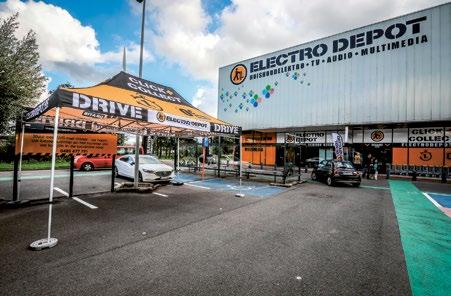
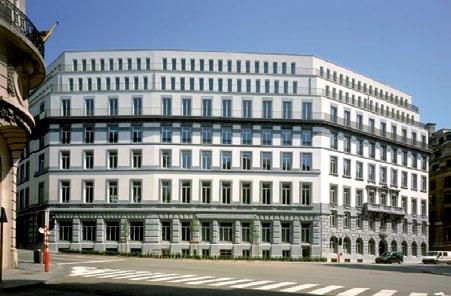

ZNA Antwerp 1,600m2
Médiacité Liège 379m2
Navimmo Sint-Truiden 33,585m2 (93,906m2 land)
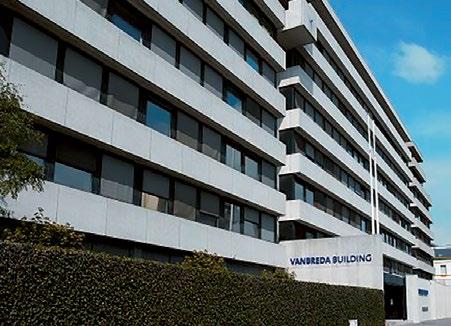
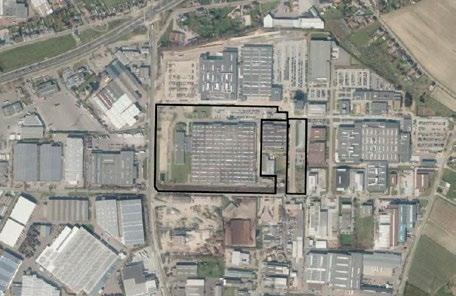
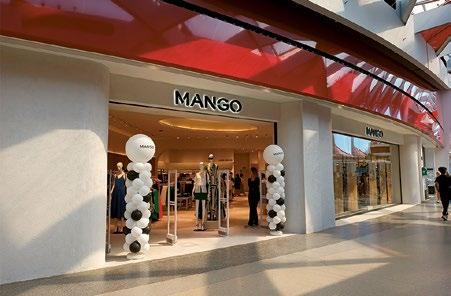
CEUSTERS is very proud to be the only Belgian real estate broker currently following UN Global Compact, the UN sustainability program. To find out what this program is about, we asked Dr. Nawal Aït-Hocine, Founder & CEO of Positive Impact Sarl. She is a recognised Sustainability, Legal and Compliance Executive with 25 years’ shaping industry best practice in the professional services sectors.

First of all, tell us about your organisation Positive Impact.
Positive Impact is a Swiss mission-driven company offering advisory and consulting services which focus on pioneering new business models, driving transformation, creating long term positive impact in the value chains and contributing to the 2030 Agenda and the 17 Sustainable Development Goals. Our 25 years of cross-sectorial sustainability, compliance and legal experience offers clients unparalleled expertise and insight. I would add that we are very proud to have been chosen by CEUSTERS and its CEO Ingrid Ceusters to accompany the organisation in its sustainability journey and the development of their first sustainability report.
Please give a general explanation about the UN sustainability program.
The UN Global Compact is the world’s largest global corporate sustainability initiative, it provides a framework to guide all businesses regardless of size, complexity or location. This program encourages companies to create a culture of integrity from strategy to operations. More than 16,000 participating companies and 3,800 non-business participants have already embraced the commitments of the UN Global Compact. On 1 January 2016, the 17 Sustainable Development Goals (SDGs) of the 2030 Agenda for Sustainable Development officially came into force. These goals universally apply to all, not only to countries which are expected to mobilize efforts to end all forms of poverty, fight inequalities and tackle climate change, while ensuring that no one is left behind.
What are its objectives?
Where objectives are concerned, signatories to the United Nations Global Compact commit to a number of principles including in particular:
• Making the UN Global Compact and its principles an integral part of business strategy, day-to-day operations and organizational culture;
• Meeting fundamental responsibilities in four areas: human rights, labour, environment and anti-corruption;
• Incorporating the UN Global Compact and its principles in decision-making processes at the highest levels, pushing sustainability deep into the company’s DNA;

• Engaging in partnerships that advance the UN Global Compact’s principles and support broader UN goals, such as the UN Sustainable Development Goals;
• Advancing the UN Global Compact and the case for responsible business practices through advocacy and outreach to peers, partners, clients, consumers and the public at large;
• Taking action that support the society around them;
• Being accountable and reporting annually on their efforts.
Companies can also help to advance the SDGs by operating responsibly in alignment with universal principles and finding opportunities to innovate to address societal challenges. Through a commitment to the UN Global Compact, companies are taking the first step to contribute to achieving the SDGs and have access to a range of tools to scale up their efforts.
With climate change, income inequality and social justice in the headlines, sustainable strategies and solutions are all the rage. This trend is also evident within the real estate industry. The discussion about sustainable construction and green buildings is not new. What is new is the acceleration of debate around the topic of sustainability over the past few years. The construction and operation of buildings is one of the major CO2 emitters. Accordingly, the public, investors and policymakers are calling for changes in real estate companies’ business models. There is indeed significant pressure on real estate players to take environmental, social and governance criteria into consideration.
Do you think the real estate industry is taking all of this on board?
There is no question that sustainability is now a fundamental commercial concern for the real-estate sector, affecting long-term value generation and short-term profitability as investors are more and more using nonfinancial measures to determine the true long-term value of real-estate companies. This trend poses significant challenges for the industry: implementing the rapidly developing regulatory requirements at EU and national levels, integrating sustainability into all corporate activities, data collection and management, etc. integrating climate change and energy transition into strategy.
How important is it for the real estate industry to be committed to these objectives?
In concrete terms, what can the real estate industry do?
Action can include reducing carbon emissions from buildings, reducing dependence on fossil fuels, shifting to cleaner energy sources, setting carbon reduction goals with an eye to becoming as carbon-neutral as possible, looking at water conservation and waste management, increasing recycling of building materials and use of recycled materials, integrating circularity into the equation / taking more steps towards a circular economy. Real-estate companies that consider the potential sustainability impacts and risks and implement solutions to reduce the risks and negative impact, will be better placed tomorrow.
CEUSTERS is the only Belgian real estate broker currently following this program. What exactly are they doing?
In August 2021 CEUSTERS became a signatory to the UNGC. Ceusters will thus support the ten principles of the United Nations Global Compact on human rights, labour, environment and anti-corruption. This was an important step for CEUSTERS, a statement about their values, and how they want to transform the company so that it benefits society and contributes to the company’s long-term success through principled business. CEUSTERS is deeply committed to making the UN Global Compact and its principles an integral part of its strategy, culture and day-today operations, and to engaging in collaborative projects which advance the broader sustainable development goals of the United Nations. CEUSTERS is committed to integrating ethical, human rights, social and environmental considerations into its daily operations, business planning activities and decision-making processes. CEUSTERS has over the years implemented many actions on social and environmental topics. These range from organizing job fairs in shopping centres, to managing its carbon impact and resource consumption with green energy contracts, through relighting projects, to integrating recycling and circularity into the way it does business with the circular wall project, and by assisting clients in obtaining BREEAM certification. These actions , and many more, will be detailed in the first Sustainability Report that CEUSTERS will publish in the coming months.

“Sustainability is an important topic in every department. So brainstorming about it with the whole team is definitely an added value.”
Katrien Geysen, Shopping Center Manager
“Take the initiative: pay attention to others and make a difference. If you take the first step, the rest will follow. Small details create big moments.”
Sahar Ben Aissa, Assistant Portfolio Manager
“I am glad that we are taking further steps towards a sustainable development; these sessions show that there is a large basis of support amongst colleagues.”
Jeroen Lefevre, Building & Facility Manager
“The workshops are very interesting because they allow us to become aware, to innovate our way of working by getting involved in the changes that need to be made to the environment.”
Yasmina Lachhab, Consultant Retail“SDGs provides Ceusters with the ideal framework to play a pioneering role in a sustainable transition in terms of people, ecology and innovation.”
Thomas Roex, Portfolio Manager
“These workshops have given me more insight into what the SDGs mean and how we can work on them ourselves.”
Gaëlle Verlinde, Promotion & Events Manager
“It is striking how colleagues -from the point of view of their own department or backgrounds- put forward other goals as being of primary importance.”
Hans Van Laer, Head of Marketing & Research
“For me, the SDGs are of paramount importance in the property management of tomorrow’s world.”
Julien Detaille, Senior Property Manager Co-ownership
One of the specialities of CEUSTERS is retail marketing. This is designed to attract customers into the shopping centres which the company manages. Toon De Meester, Retail Operations Director and Zsofi Horvath, Marketing & Communication Manager Wijnegem, explain the various aspects which constitute successful retail marketing for CEUSTERS.
Shopping center marketing, they begin, consists mainly of three categories, events, communication, and decoration. CEUSTERS always tries to find the right mix between all of these while of course respecting the annual budget that has been set. CEUSTERS manages shopping centers with some of the largest budgets within the sector but also some of the lowest. Both require creativity because expectations from retailers and customers are high.
Events are footfall-activators and are designed for specific groups; families with children are often the target audience because they are an interesting type of customer (often with higher spending).
Where decoration is concerned, CEUSTERS always tries to include an interactive element... something the customer can do or manipulate that gives them an extra experience. Decoration is important because it can create a specific atmosphere that is appealing to the customer. The best example is Christmas decoration, but other decorations can also create a positive vibe within the centre. Events and decoration come together as the latter is an important part of the former.
Communication is the third element but is the one that has been growing massively in importance with the growth of social media, which offer such a wide variety of opportunities. It is also a fast evolving domain which makes keeping up to date with all latest evolutions a challenge. Every type of social media also appeals to different target audiences.

This means that events and tailor-made communication to the various target groups are two important pillars with which CEUSTERS can distinguish itself from shopping streets in cities and towns. Visitors know that there is always something going on in Wijnegem – Shop Eat Enjoy, for example. And in the current economic climate, the on-top experience offered free of charge is an important asset that is strongly emphasized. All actions are aimed at giving customers a pleasant shopping experience and ensuring that they enjoy their visit without any stress or cares.
Remaining with Wijnegem, a good example of communication involves finding your way around the centre. With 250 shops, this is not always obvious. Besides the classic leaflets available, visitors can find their way around via digital screens in various places. There is also an indoor navigation app which shows customers the way on their mobile phones.
Each channel also requires a specific approach, so where it used to be possible to create just one single communication, nowadays individual messages are required for each target group. And CEUSTERS also annually conducts market research to define evolution within the customer base. By analyzing the results, it is possible to define which groups CEUSTERS will try to attract within the next year. These groups can be defined by gender or age but also by geographical location. It should be noted, of course, that marketing campaigns have the objectives both of bringing in more visitors and of boosting sales.

The role of marketing has taken on an extra dimension in recent years, Toon De Meester and Zsofi Horvath point out, and will change significantly in the coming period. Wijnegem is a commercial organization that is obviously focused on profit maximization, but there is more. People also want to know why certain things are done. The human interest and the role of the greater society has an important role in marketing. A concrete example of this is ‘Teddy seats’. An award winning campaign was set up in the centre whereby customers were able to contribute by bringing in cuddly toys they no longer used. In total, more than 5,000 cuddly toys were collected from which teddy seats were made. These were donated to charities.
A collection point has also recently opened in Wijnegem where visitors can bring in their clothes, books, toys and small household appliances. This is how we all contribute to the circular economy. And last but not least, CEUSTERS is also putting huge effort into data marketing, with the objective of gaining a good understanding of visitors, as this is the only way the company can give them what they want and keep them happy. The marketing landscape is changing rapidly and CEUSTERS continues to make sure it is constantly up to speed.

“Today, more than ever, the free ontop experience is an important asset”Toon De Meester Retail Operations Director at CEUSTERS Zsofi Horvath Marketing & Communication Manager Wijnegem Shop Eat Enjoy
Winning an award is always gratifying, especially when it is fellow experts from the industry who choose the winners. And winning many awards is naturally even more of an achievement. It is thus a source of great pride that the expertise and professionalism which CEUSTERS brings to shopping centre management and marketing were recognized and rewarded in October 2022 at the BLSC Marketing Awards Ceremony in Waterloo. The BLSC (Belgian Luxembourg Council for Retail and Shopping Centres) is an organisation which represents the interests of professionals from the two countries in the retail and shopping centre domain.
Out of a total of twenty nominations for prizes in the five categories, ten were for CEUSTERS campaigns! And out of the five categories, CEUSTERS was awarded first prize in three! These were:
• Pieter Van Aelst campaign ‘We wheelie love you!’
• Wijnegem Shop Eat Enjoy campaign ‘Teddy seats’ in the ‘Art for all – large shopping center category
• Wijnegem Shop Eat Enjoy campaign ‘Bee Happy’ in the ‘Social Corporate responsibility category
That’s not all! The European organization ECSP (European Council of Shopping Places) also recognised Ceusters in its 2022 awards ceremony, for the following achievements:

• Highly commended entry for Waasland Shopping / Rebranding campaign
• Highly commended entry for Wijnegem Shop Eat Enjoy / Teddy seats
And these follow on from a total of no fewer than eleven gold and silver Solal awards from ICSC (International Council of Shopping Centers, the predecessor of ECSP ) over the last decade.
CEUSTERS does not intend to rest on its laurels, however, but will be striving in the future to bring even more success to the shopping centres it manages, to the benefit of retailers and shoppers alike. And hopefully more awards will come...!





In line with its policy of constantly improving the client experience, CEUSTERS has recently opened a new office in Brussels. This is located in the iconic ‘Royal Warehouse’ of Tour & Taxis alongside the canal in Brussels North District.



The fully renovated 230 m² office is totally compatible with the latest working methods, featuring eight flexible working places operated as ‘plug&play’ and with a clean desk policy. There is also a meeting room for ten people, enabling internal gatherings and efficient client consultations. The working environment is also further enhanced by the inclusion of a substantial amount of greenery. Access to the new offices is smart, using the latest Udini technology.
The choice of Tour & Taxis is highly logical. This multi-tenant location, a total renovation of the former customs clearance facilities for Belgium originally constructed in 1900, now represents a genuine experience hub, with retail activities on the ground floor, and many events at the Gare Maritime alongside, which also offers a lively food market. Just a few minutes’ walk from the North Station and its train, bus and metro services, Tour & Taxis is also very easily accessible. For those coming by car, there is sufficient underground car parking. These attributes and this vibrant location are not just an advantage for clients, but help to make a more enjoyable work experience for our personnel too, an important aspect in ensuring a good work-life balance.
CEUSTERS new office will serve as a Brussels base for the Agency, Property Management and Valuation & Advisory departments. Brussels and the neighbouring Brabant regions are an important market for CEUSTERS, with over 13,000 m² of office/warehouse/retail space already transacted in this region this year, and a total property management portfolio of over 600,000 m² in and around Brussels.

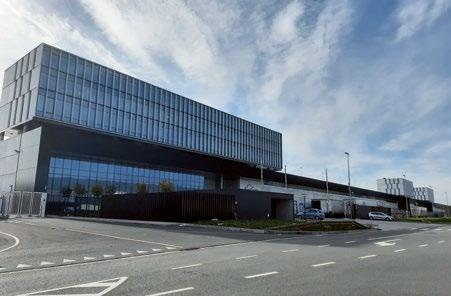

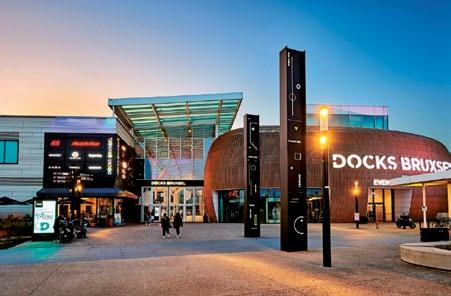
Property Management Property of IOK Olen
1,860 m2 warehouse / 300 m2 office

Retail Park Management Gerkenspark
Bree 9 units / 11,503 m2 retail / 560 parking units

Property Management & Management Co-Ownership
Greenhill Campus
Leuven
22,292 m2 offices / 509 parking units

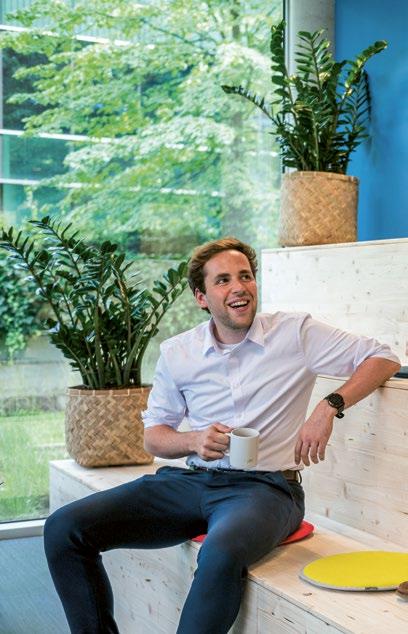


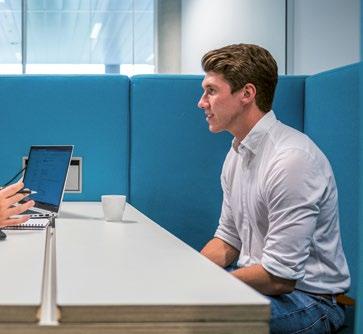
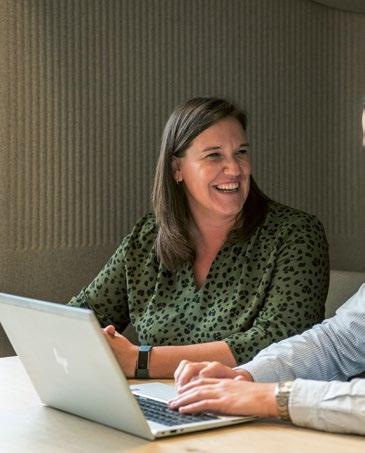
UITBREIDINGSTRAAT 72 BUS 2 2600 ANTWERP +32 (0)3 231 88 76
TOUR & TAXIS

HAVENLAAN / AVENUE DU PORT 86C 1000 BRUSSELS +32 (0)2 735 81 90
RIJVISSCHESTRAAT 124 9052 GHENT +32 (0)9 233 36 45
CORDA CAMPUS CORDA 1 KEMPISCHE STEENWEG 311/2.12 3500 HASSELT +32 (0)11 22 09 30
ROTTERDAM BRAINPARK (212) LICHTENAUERLAAN 102-120 3062 ME ROTTERDAM
ANTWERP - BRUSSELS - GHENT - HASSELT - ROTTERDAM